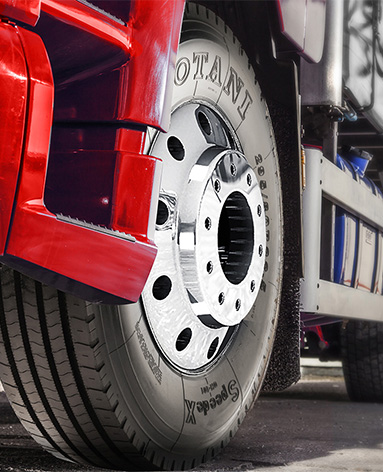Dec . 20, 2024 05:22 Back to list
how to adjust brake drums
How to Adjust Brake Drums A Comprehensive Guide
Adjusting brake drums is an essential maintenance task that every car owner should know. This procedure ensures that your vehicle's braking system functions optimally, providing safety and reliability while driving. In this article, we will cover the necessary tools, the steps to adjust brake drums, and some tips for maintaining your braking system effectively.
Understanding Brake Drums
Brake drums are part of the drum brake system, which consists of drums, shoes, and various hardware components. Unlike disc brakes, which use calipers and rotors, drum brakes rely on friction created between the shoes and the internal surface of the drum. Over time, as the brake shoes wear down, the distance between the shoes and drum increases, leading to reduced braking efficiency. Therefore, regular adjustments are crucial to maintain optimal performance.
Tools Required
Before starting the adjustment process, gather the following tools
1. Lug Wrench To remove the wheel. 2. Jack and Jack Stands To lift the vehicle safely. 3. Brake Adjustment Tool Typically a flathead screwdriver or specific brake adjustment tool. 4. Tape Measure or Feeler Gauge For measuring the gap between the shoes and drum. 5. Safety Glasses To protect your eyes during the process.
Steps to Adjust Brake Drums
1. Preparation Park your vehicle on a flat surface and engage the parking brake. Ensure you are wearing safety glasses throughout the process.
2. Lift the Vehicle Use the jack to lift the car and secure it with jack stands. Once the vehicle is elevated, remove the wheel using the lug wrench.
3. Inspect Brake Components Before making any adjustments, inspect the brake shoes, drums, and hardware for signs of wear or damage. Replace any components that appear worn out.
how to adjust brake drums

4. Locate the Adjuster Inside the drum assembly, you will find an adjustment mechanism, which can vary depending on the vehicle. It’s usually a star wheel adjuster or a similar device.
5. Adjust the Brake Shoes Using your brake adjustment tool, turn the adjuster to expand the brake shoes. Rotate the star wheel or adjuster until the shoes lightly contact the drum. This may involve turning it in a clockwise or counterclockwise direction depending on the design.
6. Check the Gap Use a tape measure or feeler gauge to check if the gap between the shoes and drum is within the manufacturer’s specifications (usually around 0.020 inches). If necessary, continue to adjust until the desired gap is achieved.
7. Rotate the Drum After adjusting, manually rotate the brake drum to ensure that the shoes do not bind and can move freely. This movement indicates that the shoes are properly adjusted.
8. Reassemble the Wheel Once adjustments are complete and you've confirmed everything is functioning properly, reattach the wheel and tighten the lug nuts in a star pattern to ensure even tightness.
9. Lower the Vehicle Carefully lower the vehicle back to the ground using the jack and jack stands. Perform a final check on the lug nuts.
10. Test Drive Before hitting the road, take your vehicle for a short test drive. Pay attention to the brake feel; they should engage smoothly without any grinding or unusual noises.
Maintenance Tips
- Regular Inspection Make it a habit to inspect and, if necessary, adjust your brake drums every 6 months or according to your vehicle's service manual. - Replace Worn Parts Don’t delay replacing worn-out shoes or drums; doing so will prevent costly repairs and ensure safety. - Keep Brake System Clean Regularly inspect and clean dust and debris from your brake components to enhance performance.
Conclusion
Adjusting brake drums is a straightforward yet crucial task that contributes to the safety and efficiency of your vehicle's braking system. By following the steps outlined in this article, car owners can ensure their braking system remains in excellent condition, ultimately leading to safer driving experiences. Remember, if you’re unsure or uncomfortable performing this task, consulting a professional mechanic is always a wise choice. Your safety is paramount, and maintaining your vehicle’s brake system is the first step in safeguarding it.
-
Your Brake Drum Man: Premium & Reliable Brake Drums for Sale
NewsAug.18,2025
-
ROR Web Development: Build Fast, Scalable, Secure Apps
NewsAug.17,2025
-
Scania Brake Drums: OEM Quality for Optimal Safety & Durability
NewsAug.16,2025
-
R.V.I: Advanced Remote Visual Inspection for Precision
NewsAug.15,2025
-
Discover HYUNDA: Innovative Vehicles, Equipment & Solutions
NewsAug.14,2025
-
R.V.I: Unlock Advanced Insights & Real-time Performance
NewsAug.13,2025
